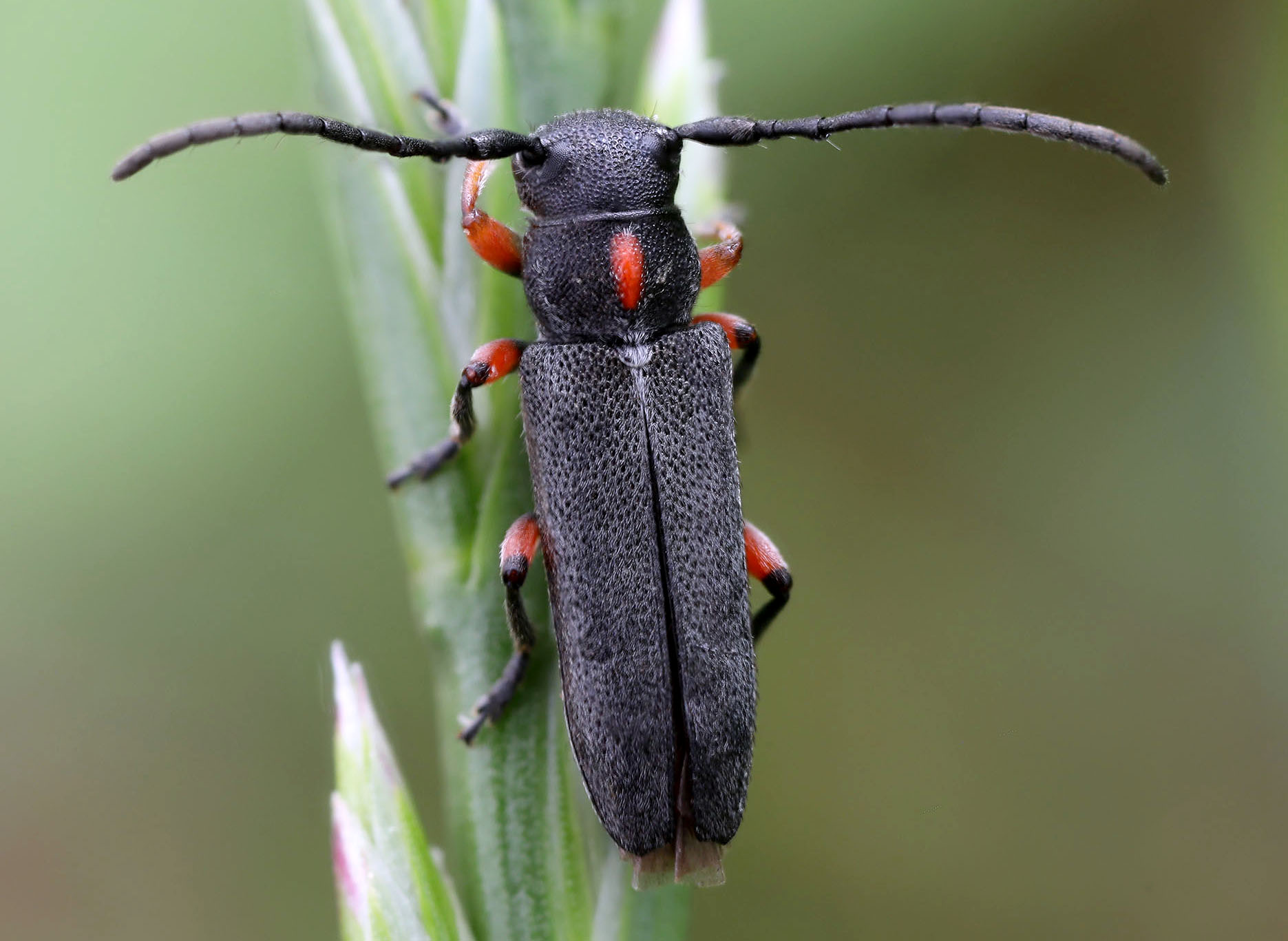ssp. pustulata (Schrank, 1776)
Subfamilia: LAMIINAE / Tribus: SAPERDINI

[Photo © Daniel Rydzi]
Phytoecia pustulata, a widely distributed West-Palaearctic species occuring from Atlantic coast of Europe to Iran, Kazakhstana and West Siberia, has been described from Linz environs (Austria) as Cerambyx pustulatus by Franz von Paula Schrank in 1776 [▽]. This common European member of Phytoecini tribe belongs among oligophagous species developing in basal stalk parts and roots of Asteraceae. Known host plants are for example Achillea, Tanacetum, Chrysanthemum or Pyrethrum. Life cycle one year. Adults, active from late April to July, are diurnal and can be found on the host plants.
Body length: 5 - 9 mm Life cycle: 1 year Adults in: April - July Host plant: oligophagous in Asteraceae (Achillea, Tanacetum, Chrysanthemum, Pyrethrum) Distribution: Europe except North, Armenia, Azerbaijan, Georgia, Iran, Kazakhstan, Kyrgyzstan, Lebanon, Turkey, Uzbekistan
The depicted beetle was photographed in Kozly village environs (Louny district, Ústí nad Labem region, Czechia) on June 5, 2021.Collected by Daniel Rydzi
[▽]
von Paula Schrank F.:
Beyträge zur Naturgeschichte.
Leipzig, Fritsch 8: 1-137, 1776. [download]
Sláma M.E.F.:
Tesaříkovití – Cerambycidae České republiky a Slovenské republiky / Cerambycidae of the Czech Republic and Slovak Republic.
Milan Sláma private printing, Krhanice, 383pp [pages 338-339], 1998 [ISBN: 80-238-2627-1]. [download]
| Subfamilia | Lamiinae Latreille, 1825 |
| Tribus | Saperdini Mulsant, 1839 |
| Genus | Phytoecia Pic, 1892 |
| Subgenus | Phytoecia Pic, 1892 |
| Species | Phytoecia (Phytoecia) pustulata (Schrank, 1776) |
| Subspecies | Phytoecia (Phytoecia) pustulata pustulata (Schrank, 1776) |
